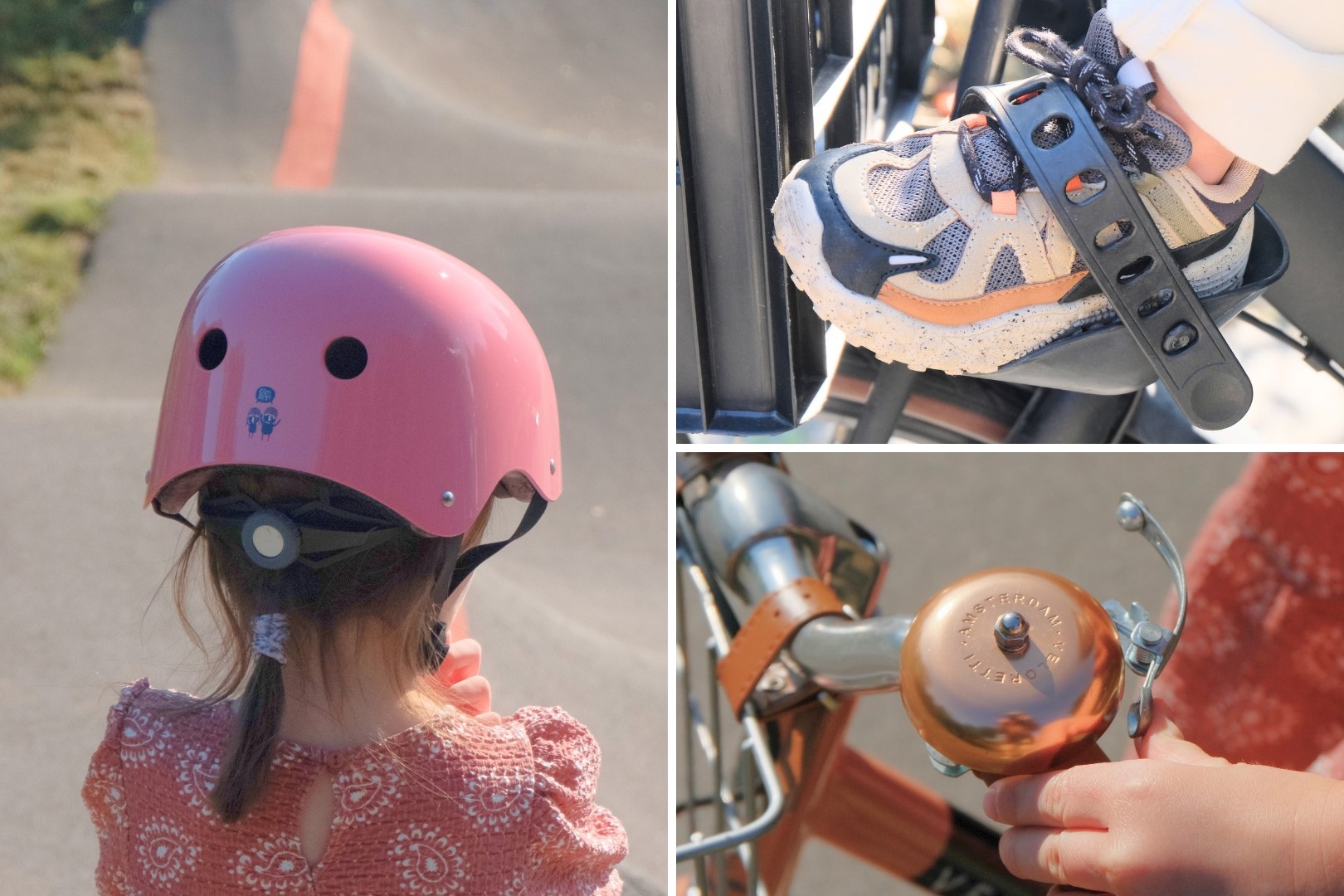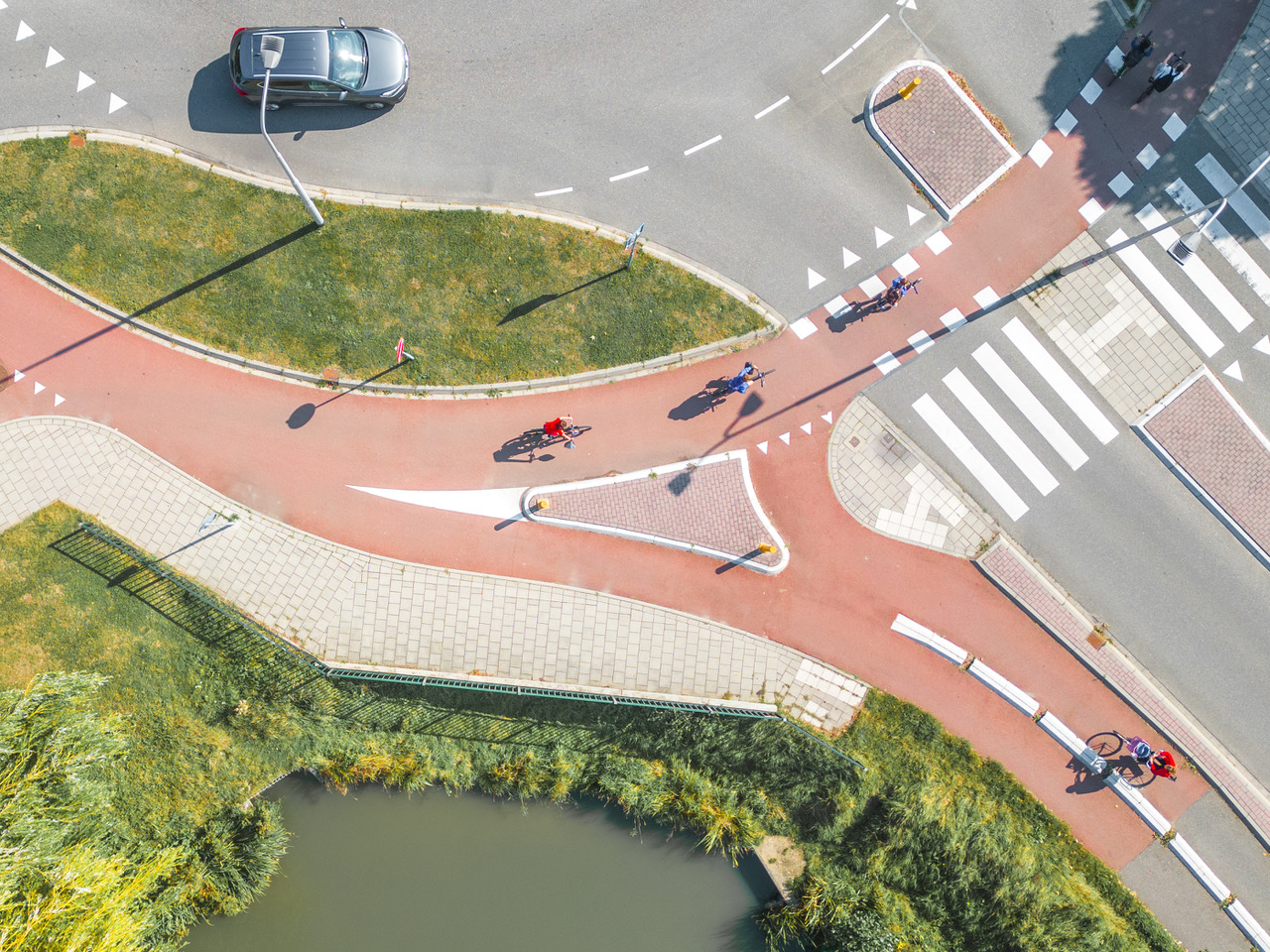Bike Safety: Tips for cycling safely with children
Schools are back in session, and that means kids are once again riding their bikes to and from school every day. Cycling is an excellent way for children to stay active, discover the world around them, and develop independence. But, like any activity, safety is crucial. Bicycle accidents can happen in the blink of an eye, especially with children, so we’re here to provide important information and practical tips to keep them safe.
The importance of bicycle safety
Children are full of energy and enthusiasm. Their eagerness to explore can sometimes lead to risky behavior, including when cycling. In the Netherlands, more than 8,000 children end up in the Emergency Room every year due to traffic accidents. That is equivalent to 20 children per day. Of these traffic accidents, 84% involve bicycle accidents. That’s a significant portion.
Bicycle accidents can range from minor scrapes to fractures and, in some cases, even a fatal outcome. The head is particularly vulnerable in such accidents. An accident where a child falls on their head can cause significant and lasting damage. Additionally, children’s brains are still in the developmental stage. Wearing a properly fitting helmet can significantly reduce the risk of head injuries. Among the children who ended up in the Emergency Room due to bicycle accidents, almost none were wearing a helmet. At the same time, 22% of these children had injuries to the head, neck, or neck area.
Tips to prevent cycling accidents
As a parent of caretaker, you can reduce the risk of bicycle accidents by following these tips:
- Wear a helmet: Encourage children to always wear a properly fitting helmet while cycling. Teach them how to wear and adjust the helmet correctly so they can do it themselves when you’re not around.
- Teach traffic rules: Educate children about traffic rules and signs at a young age. Practice with them how to stop at stop signs and safely cross streets.
- Practice cycling skills: Find a safe environment, such as an empty parking lot, to practice cycling skills like making turns, stopping, and starting.
- Ensure visibility: Use bright, reflective clothing and accessories, especially in low-light conditions. Install reflectors on the bike to increase visibility, and ensure the lights are always functional.
- Bike inspection: Regularly check your child’s bike for loose parts, brakes, tires, and handlebars. A well-maintained bike is safer to ride.
- Supervise young children: For younger kids, it’s important to ride under supervision, preferably in a closed-off area without traffic.
- Teach hazard recognition: Teach children to recognize potentially dangerous situations, such as parked cars with doors that could swing open.
- Set a good example: Children often learn by imitation. If adults demonstrate safe cycling behavior and its importance, children are more likely to follow suit.
- Stay alert: Emphasize the importance of staying alert while cycling. Also, inform them that using phones or other distractions can increase the risk of accidents.
Safely carrying children in front or rear bicycle seats
The above tips primarily focus on children riding their own bikes. However, accidents also frequently occur when children are seated in front or rear bicycle seats. For instance, research by VeiligheidNL found that 80% of bicycle accidents involving children aged 0 to 11 resulted from a foot getting caught in the spokes.
Here are some tips for safely carrying children in front or rear bicycle seats:
- Front seats are designed for children aged 9 months to approximately 3 years old, or until they weigh more than 15 kg. By 9 months, a child’s neck and trunk muscles are strong enough to sit upright comfortably. As a child gets heavier, it becomes more stable – and therefore safer – to place them in a rear seat.
- Ensure that rear child seats have adequate spoke protection. Purchase one that accommodates growth and regularly check its condition.
- Child seats equipped with a harness, headrest, and footrests are the safest option. Always verify that the harnesses and foot straps are securely fastened.
- Do not leave children in front or rear bicycle seats when the bicycle is on its kickstand, especially if it has a double kickstand. There is always a risk of the bike tipping over.
Safely from point A to B in Childcare
In childcare settings as well, children are frequently transported by bike from school to after-school care. In recent years, organizations in the childcare sector have made efforts to make transportation of children safer.
As alternative to cycling, one of the most utilized transportation modes in the Netherlands for after-school care is the BSO Bus, a compact electric wagon that can carry up to 10 children. It has great safety benefits for the traffic situation around schools, but it also carries a lot of responsibility for the children. Therefore, clear agreements are established regarding its safe use.
For all modes of transport, routes should be carefully chosen in advance to ensure safety. Is the shortest route really the safest one? Or would it be better to take a detour to avoid that chaotic, busy intersection? Make sure children go prepared. And know what risks to encounter.
Childcare Safety
Cycling accidents, but also other accidents involving children, are especially common around this time of year. The journey to school, whether by car, bike, or on foot, takes some getting used to again, just like the risks associated with playing and running around the schoolyard or inside the school building. In a previous blog, you can find tips for a safe start to the new school year.
If you have any questions about child safety and how to further improve it at home, school, or in childcare settings, please take a look at our range of products and feel free to contact us for more information. We’re here to assist you in choosing the right solutions!


